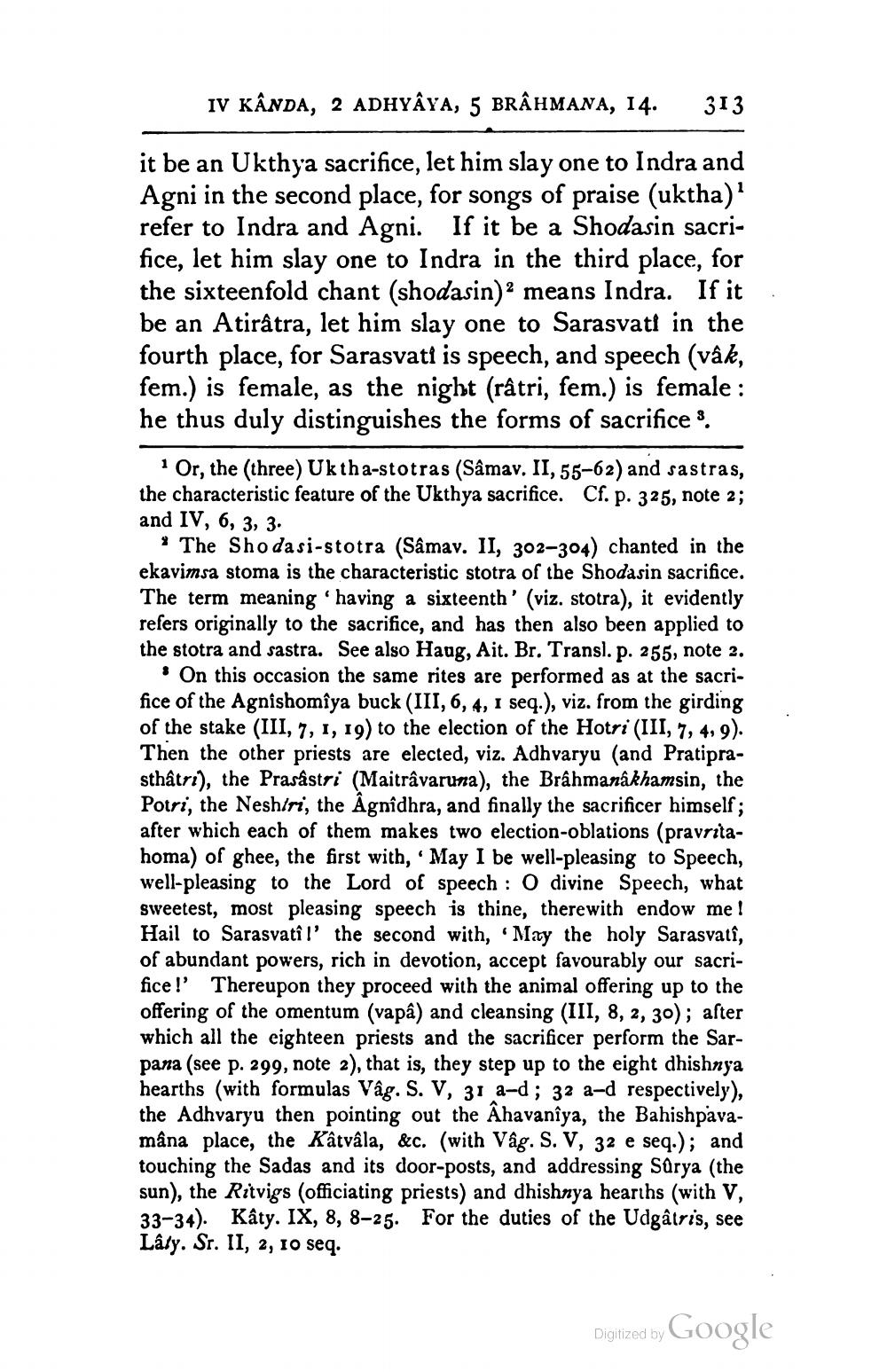________________
IV KÂNDA, 2 ADHYAYA, 5 BRÂHMANA, 14.
313
it be an Ukthya sacrifice, let him slay one to Indra and Agni in the second place, for songs of praise (uktha)' refer to Indra and Agni. If it be a Shodasin sacrifice, let him slay one to Indra in the third place, for the sixteenfold chant (shodasin)means Indra. If it be an Atirâtra, let him slay one to Sarasvati in the fourth place, for Sarasvati is speech, and speech (vâk, fem.) is female, as the night (râtri, fem.) is female : he thus duly distinguishes the forms of sacrifice s.
* Or, the (three) Uktha-stotras (Sâmav. II, 55-62) and sastras, the characteristic feature of the Ukthya sacrifice. Cf. p. 325, note 2; and IV, 6, 3, 3.
9 The Sho da si-stotra (Sâmav. II, 302-304) chanted in the ekavimsa stoma is the characteristic stotra of the Shodasin sacrifice. The term meaning 'having a sixteenth' (viz. stotra), it evidently refers originally to the sacrifice, and has then also been applied to the stotra and sastra. See also Haug, Ait. Br. Transl. p. 255, note 2.
. On this occasion the same rites are performed as at the sacrifice of the Agnishomîya buck (III, 6, 4, 1 seq.), viz. from the girding of the stake (III, 7, 1, 19) to the election of the Hotri (III, 7, 4, 9). Then the other priests are elected, viz. Adhvaryu (and Pratiprasthầtri), the Prasastri (Maitrâvaruna), the Brahmanakhamsin, the Potri, the Neshtri, the Āgnîdhra, and finally the sacrificer himself; after which each of them makes two election-oblations (pravritahoma) of ghee, the first with, May I be well-pleasing to Speech, well-pleasing to the Lord of speech : O divine Speech, what sweetest, most pleasing speech is thine, therewith endow me! Hail to Sarasvatîl' the second with, May the holy Sarasvati, of abundant powers, rich in devotion, accept favourably our sacrifice! Thereupon they proceed with the animal offering up to the offering of the omentum (vapa) and cleansing (III, 8, 2, 30); after which all the eighteen priests and the sacrificer perform the Sarpana (see p. 299, note 2), that is, they step up to the eight dhishnya hearths (with formulas Vâg. S. V, 31 a-d; 32 a-d respectively), the Adhvaryu then pointing out the Ahavanîya, the Bahishpavamâna place, the Kâtvala, &c. (with Vâg. S. V, 32 e seq.); and touching the Sadas and its door-posts, and addressing Surya (the sun), the Ritvigs (officiating priests) and dhishnya hearths (with V, 33-34). Kâty. IX, 8, 8-25. For the duties of the Udgâtris, see Lâty. Sr. II, 2, 10 seq.
Digitized by Google




